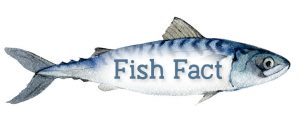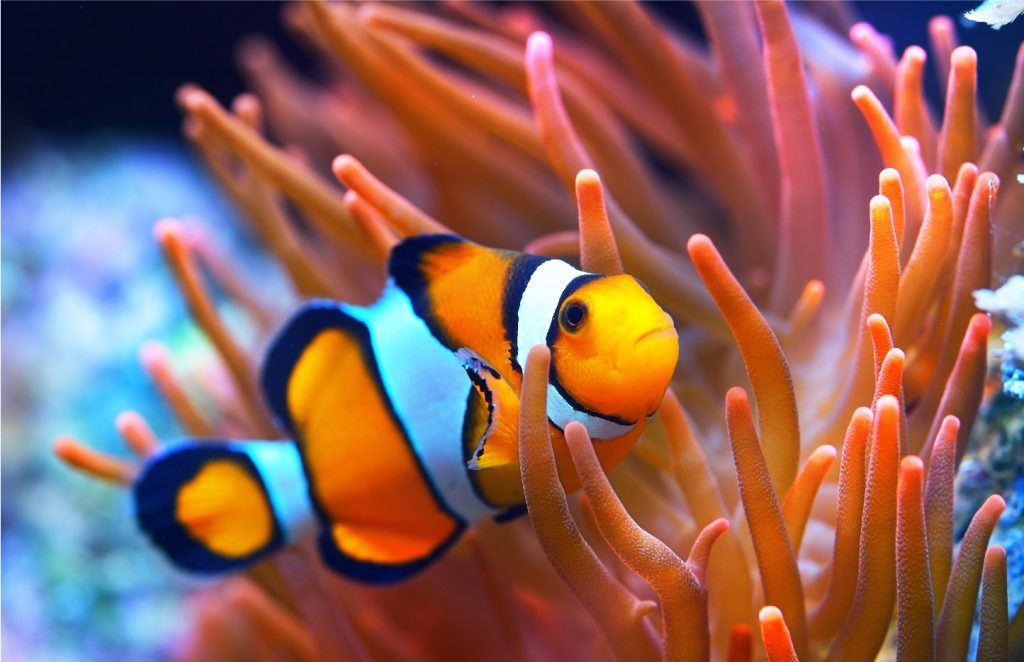Have you ever been to an aquarium, stared through the glass, and thought, “I haven’t seen the fish blink. Do fish blink? And do they sleep?”
Do fish sleep?
Fish do sleep! Being a fish can be dangerous, so fish must be aware of their surroundings at all times. This is one reason for their unusual sleeping habits. Their brains do not need the same kind of rest a human brain needs.

This post explores how fish sleep and other common questions about these marine animals!
For a fun, FREE Marine Match-Up game, click the button below.

What does it mean to sleep?
Merriam-Webster lists the first definition of sleep as “the natural state of rest during which your eyes are closed and you become unconscious.”


How are fish eyes different from human eyes?
First, to understand how fish sleep, you must know about their unique eyes.
Fish eyeballs are much like a human’s. The only difference is the eyes’ lenses. Humans have flat, thin lenses to help us see in light-filled environments. Fish, on the other hand, live in darker environments. Their thick, spherical lenses help them see in dark water.
Another difference is that human eyes are covered with eyelids that can blink. Eyelids seem unimportant, but they serve an essential function! They keep our eyes moist and help protect them from dust in the air. Fish do not need eyelids since they live in a very moist environment with no dust.

Q: What is the only fish that DOES have mobile eyelids?
A: Sharks have a transparent membrane that closes over their eyeballs for protection while attacking. A small handful of shark species, such as the great white, do not have this membrane. Instead, they roll their eyes for protection.




Do fish have brains?
Fish do have brains, but their brains are relatively small compared to their body size.
Human brains are fascinating! The majority of your brain is responsible for higher-level functions such as reasoning, sensing, language, and memory. These very complex tasks mean humans need a lot of rest. Fish do not have these parts in their brains, so their sleep looks very different from ours.

Q: Which sea mammal sleeps with one eye open and puts half its brain to sleep at a time?
A: Dolphins! They do not breathe automatically, so they must remind themselves to breathe. For this reason, only half their brain sleeps at a time in two-hour increments. This also keeps them alert to dangers like predators or drowning since they breathe at the surface of the water. Porpoises and seals sleep this way too.


How do fish sleep?
So, do fish sleep? Yes–but how? If a fish has no eyelids, it cannot close its eyes to sleep. A fish also must continuously swim.
As we mentioned before, fish brains do not need the same kind of rest your human brain needs since theirs aren’t as complex. Their sleep looks more like a slowdown. Their eyes remain open because they have no eyelids and because they don’t need to blink.
As water passes over their gills, they receive the oxygen they need for respiration. This keeps them moving slowly as they sleep. Their heart rate also slows during sleep.

Q: Which seabird can sleep while flying?
A: The albatross spends so much time hunting in the air that it sleeps for seconds at a time while gliding on wind currents over the ocean.


When do fish sleep?
When fish sleep depends on two things: their environment and their species. Some species are active during the day and rest at night. Other types of fish stay wide awake until they reach adulthood. Some species of fish stop sleeping while migrating or caring for their young. And if you have a fish tank at home, you may notice your fish like to sleep when you turn off the lights.

Q: Which sea mammal has so much blubber that it stays buoyant (floating) as it sleeps?
A: Walruses sleep on land or water and are known to swim for over 80-hour stretches. They fill air pouches located on the sides of their heads to keep their heads above water to breathe.

Let’s play a fish game!
Learning about fish and other sea creatures is so much fun!
Download this FREE Marine Match-Up game!


Find out more
Learn more fun facts about fish in our Marine Biology
or Reptiles, Amphibians, and Fish science units!
You may also like . . .
















Comments
Great ideas!
So fun! Thanks for all the great content!
So cool!
Love it
My 6 year old asked me this very question the other day and. I was stumped 🤔 but I knew exactly where to look!! Thank you for all the info with not only this but all over science and nature blog posts!